Hamachi is one of the most popular sushi items in North America and Japan. But what is a yellowtail, and where does this fish come from?
Learn about the fish, its flavor, most popular dishes, and pairings.
What is Hamachi?
Hamachi is a species of jack that’s often called yellowtail or buri. It’s a super popular fish in both Japan and the US. And fish labeled as hamachi is almost always farm-raised.
This yellowtail post is part of an informative sushi and sashimi guide. Check it out if you want to take your sushi game pro.
One Fish, Many Names
There are many different names for this fish in Japan. It all depends on the region and the size/season of the fish.
In the Kanto area, which includes Tokyo, yellowtail are called (from smallest to largest) wakashi, inada, warasa, and buri. In western Japan, (from smallest to largest) tsubasu, hamachi, mejiro, and buri are all names for yellowtail.
It’s confusing, right? Outside of Japan, hamachi and buri are the only two names you really need to know.

advertisement
Farmed Vs Wild
Hamachi has been farm-raised longer than any other fish in Japan.
It took some trial and error. But eventually, in western Japan, it was discovered how to farm yellowtail. The name hamachi stuck because they were sending smaller, younger yellowtail to the market. Hamachi is the term they use for that size of fish.
It wasn’t long before the term hamachi became synonymous with farm-raised yellowtail. Adult fish, called buri, are wild-caught. So are all of the other regional names for yellowtail (mejiro, inada, etc.).
Farming hamachi requires wild-caught juveniles. This isn’t a sustainable practice, and the species is struggling. Kanpachi (greater amberjack) is a more sustainable alternative.
Japanese Amberjack
Yellowtail is a common name for several species of fish. Japanese amberjack is a more precise name for this fish. Seriola quinqueradiata is its scientific name.
There are two close relatives of hamachi that you might find on a sushi menu. One of them is yellowtail amberjack (Hiramasa) or Seriola lalandi. The other is greater amberjack (kanpachi) or Seriola dumerili.
Confusingly, all three of these fish species are called yellowtail in certain places.
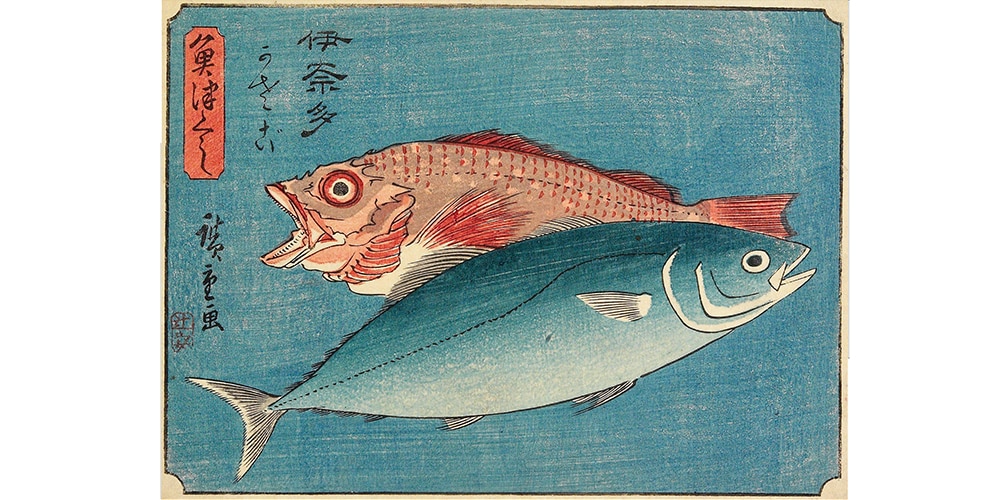
advertisement
Is Yellowtail a Tuna?
No, yellowtail is not a tuna. Yellowfin tuna is probably the source of the confusion. But they are not the same fish, nor are they closely related.
What Does Yellowtail Taste Like?
Hamachi, being farm-raised, is a fatty fish. It has a semi-soft texture and a mild, slightly sour taste. It’s not fishy at all, which is one reason it’s so popular.
Wild-caught winter yellowtail, or kanburi, is also a fatty fish. But less so than its farm-raised hamachi counterpart. Buri is firmer in texture with a rich umami taste. Smaller wild-caught yellowtail like inada is lean and firm-textured.
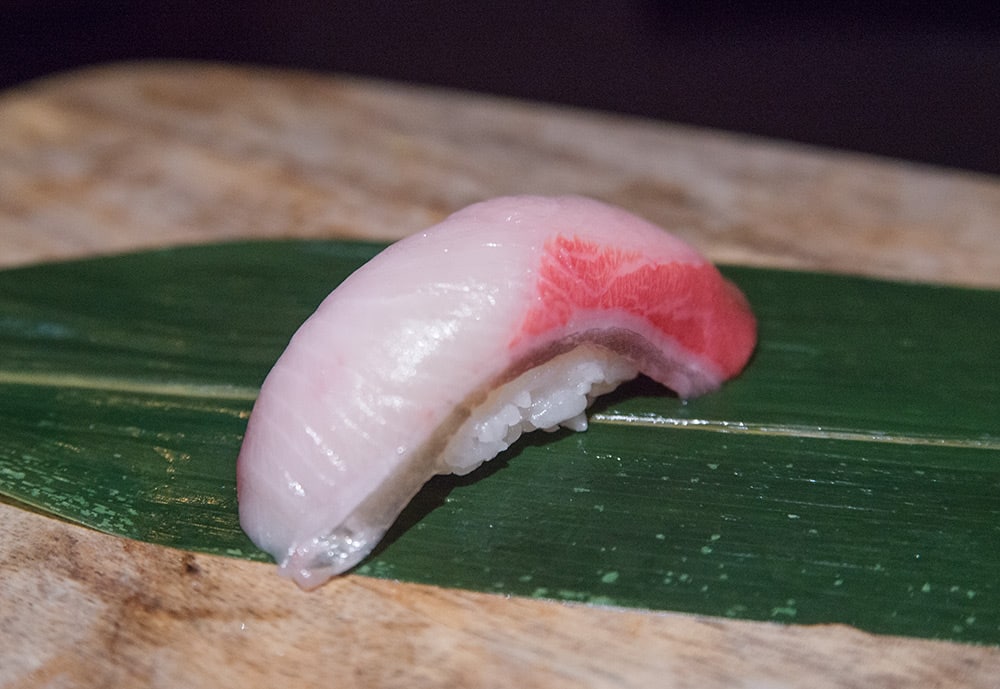
Types of Hamachi Fish Dishes
There are many Japanese dishes that use yellowtail. Many of them are raw, but you can also find some that are cooked.
Yellowtail Sushi
Hamachi is synonymous with sushi. And there are a few popular yellowtail sushi preparations.
Hamachi Nigiri
It doesn’t get much better than hamachi nigiri. It’s simply a finger of sushi rice with a raw slice of yellowtail on top. A bit of wasabi is often placed between the rice and fish.
It’s traditional to eat nigiri with your hands. And if you like to use soy sauce, dunk the fish, not the rice. Dunking the rice into soy sauce will absorb way too much.
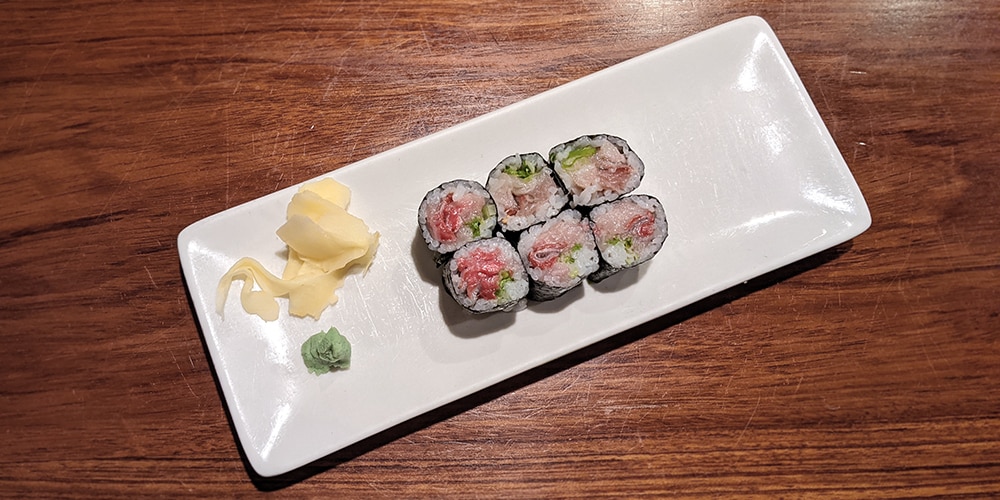
Negihama
Negihama is a combination of negi (scallion) and hamachi. The yellowtail is finely minced and mixed with the scallion.
Negihama is usually maki sushi.
But if you’re lucky, the chef may be willing to make it as a gunkanmaki. This nigiri variation has nori seaweed wrapped around the rice. The seaweed holds the loose negi hamachi in place.
Check out my negihama guide to learn more about this sushi classic.
Yellowtail Sashimi
Hamachi sashimi is simply a thin slice of yellowtail. Shredded daikon, a cucumber, or a shiso leaf are common garnishes under the fish.
Sashimi is slightly healthier than sushi. This is because there’s no rice and a lower amount of sugar and sodium from sushi vinegar.
Hamachi Jalapeno
Combining yellowtail sashimi and slices of jalapeno is very popular in the US. Ponzu, which is citrus and soy sauce, is often drizzled over the top. This popular appetizer is fatty, spicy, savory, and citrusy.
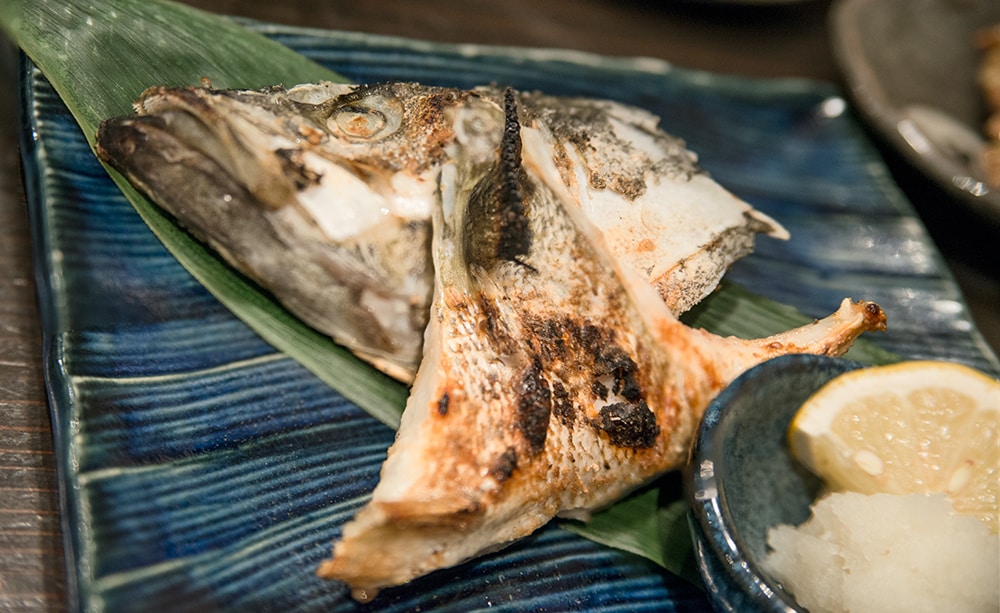
Hamachi Kama
Hamachi kama is the cooked collar, or cheek, of the yellowtail. It’s salt-grilled (shioyaki) and delicious.
Yellowtail collar is not sushi, but many sushi restaurants and izakaya serve it.
Preparing Hamachi for Sushi
Want to try your hand at making yellowtail sushi, sashimi, and kama at home? Check out these two how-to videos from Sushi by Kunihiro.
Video #1 demonstrates how to break down a yellowtail.
Video #2 shows you how to make nigiri and maki sushi.
Beverage Pairings for Yellowtail
Hamachi is an oily, fatty fish and pairs very well with dry sake.
For yellowtail nigiri and sashimi, delicate and fruity sake work very well. Junmai daiginjo and daiginjo make a great pairing at the sushi bar.
For hamachi kama, I prefer brands with a bright, sour finish. This is because acidity helps to cleanse the palate. The yamahai and kimoto sub-styles usually have these characteristics.
My sake grades and styles guide will help if you’re unfamiliar with any of these terms and want to learn more.
Sauvignon blanc, pinot grigio, and lightly-oaked chardonnay also make good pairings with hamachi. And I highly recommend pinot gris if you’re a big fan of ginger and wasabi with your yellowtail.
Industrial lagers like Sapporo Premium and Asahi Super Dry are also good choices with hamachi. Elevated carbonation has a scrubbing effect. Microbrews like Echigo Koshihikari are even tastier with yellowtail.

31 Days of Sushi
If you find this post useful or enjoyable, I suggest you check out some of the other content in my 31 Days of Sushi campaign.
Every day in August I’ll share a new piece of content. Topics are centered around nigiri and maki sushi. I include sashimi info, as well.
It’s like an omakase of sushi information!
What Do You Think About Yellowtail?
What do you think about hamachi? Do you love it, find it overrated, or have an opinion about it?
Also, what’s your favorite yellowtail dish?
Please share your thoughts by commenting below!

Brad Smith
I fell in love with Japanese cuisine nearly two decades ago and soon landed my first Japanese restaurant job. Many years later, I created this site to geek out on Japanese food and beverage.
I love learning and my professional certifications include the J.S.A. Sake Diploma, Certified Sommelier (CMS), Certified Sake Advisor (SSA), Certified Shochu Advisor (SSA), Certified Specialist of Spirits (SWE), and Certified Beer Server (CCP).
Check out my about page to learn more.
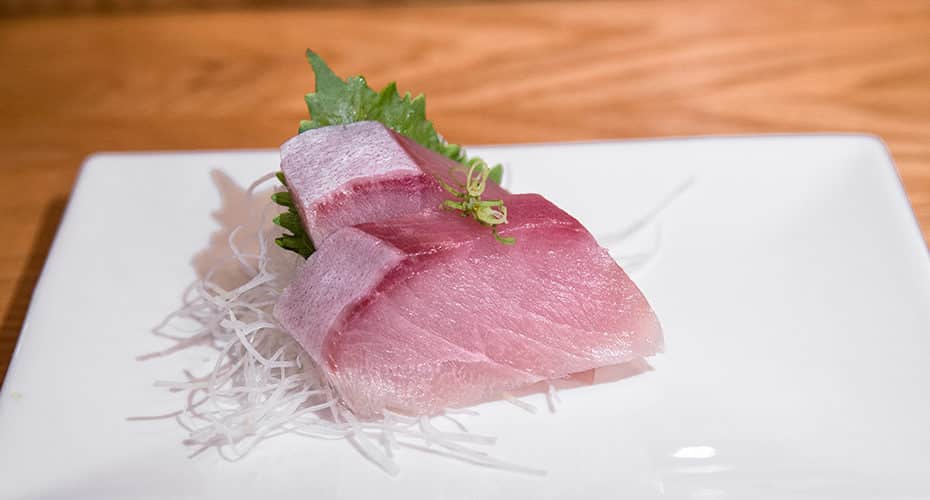
I find yellowtail to be the supreme sushi, hamachi … or whatever name purists wish to attach to this wonderful gift from the sea. Being in Alabama puts me so far from this delicacy. I’ve ordered a couple of bricks. They were very expensive but so wonderful. I’m looking for reliable resources who can ship yellowtail all the way to my home oin Fairhope, AL.
Also, I would like some recommendations for seafood in the Gulf of Mexico, off the coast of MOBILE, Alabama,
that is of sushi worthiness.
Hi Philip,
Thanks for sharing your thoughts on hamachi. I think many people agree.
As for Gulf fish to look out for, greater amberjack is pretty similar to hamachi. Often called kanpachi. Pompano is another relative that I’ve heard of served as sushi. Red snapper, smaller grouper, and flounder are other options that come to mind.
To be eaten raw, all of these fish need to be frozen at very cold temperatures. The FDA recommends temperatures from -20 to -31°F for various amounts of time. Check that out here: https://web-dfsr.s3-fips-us-gov-west-1.amazonaws.com/Iowa/assets/File/14%20Parasite%20Destruction%20Requirements.pdf
Hope this helps!
Brad
Hi, Brad.
Thank you for the interesting information on yellowtail. I tried to use the link you provided at the end of your reply to Philip, but my browser could not find the page. Is it possible there was a transcription error? Thanks for your attention.
Dave
Hi Dave,
Just updated the link. However, if the link changes again, search for: “requirements to serve raw or undercooked fish products.”
Hope this helps anyone attempting to try this at home. Note that larger tuna species (bluefin, yellowfin, bigeye) are exempt from the freezing requirements, but most chefs recommend you do so anyway to make the fish taste better.
Brad
Informative article.
Years ago, when it was safe to travel by car to Mexico, a buddy and I would make a annual trek to San Filipe, jump on a Mexican Fishing trawler and spend a glorious week in the Sea of Cortez fishing. We caught many different types of fish with yellowtail being one of the primary species caught as they were so plentiful. Being sushi lovers, we would often fillet a freshly caught yellowtail and it it raw right there on the panga (small fishing boat). We would stuff our faces and then go right back to fishing. We would save the collars and have the chef on board the boat grill them up with plenty of lime and garlic. Man, those were the days!
Great story Robert, thank you for sharing! That sounds like a blast! Those wild yellowtail you were catching were probably outstanding too. Any issues from the fresh raw meat?
👍❤